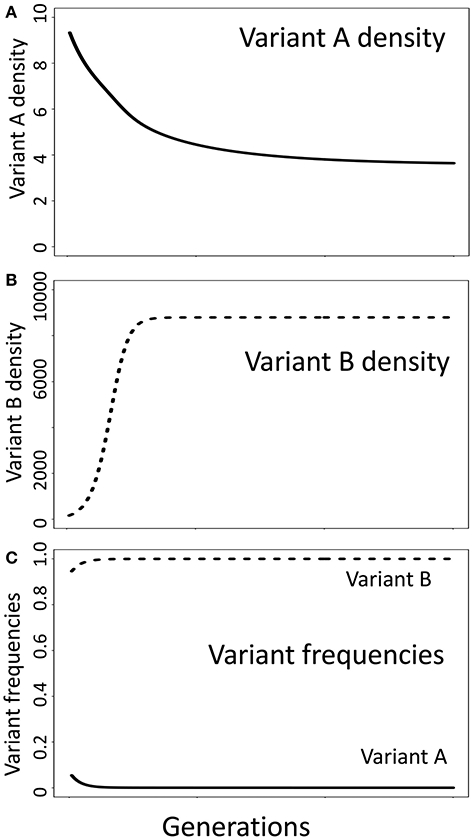FIGURE 2 ∣.

Multi-niche selection, an alternative model of balancing selection, does not require the core assumption of negative frequency-dependent selection models that relative fitness is a function of relative frequency in the population. Shown is a simulation where variant A has a selective advantage in niche A while variant B has a selective advantage in niche B (Appendix 1, Supplementary Material). Here, the carrying capacity in niche A is much lower than in niche B (KA = 10, KB = 10,000). At the start of the simulation, there are 10 variant A individuals (10% of the population) and 90 variant B individuals (90% of the population), yet the fitness (growth rate) of variant A individuals is much lower than for variant B individuals. This contradicts the expectations of negative frequency-dependent selection, where the frequency of variant A should increase as it is currently less frequent than variant B. Although the conditions necessary for negative frequency-dependent selection to maintain a stable polymorphism are not satisfied, both variants can be maintained in the population due to the selective advantage each enjoys in their preferred niche. Parameters used in the simulation: growth rate = 0.35, death rate in preferred niche = 0.05, death rate in non-preferred habitat = 0.25, migration among niches = 0.01.
